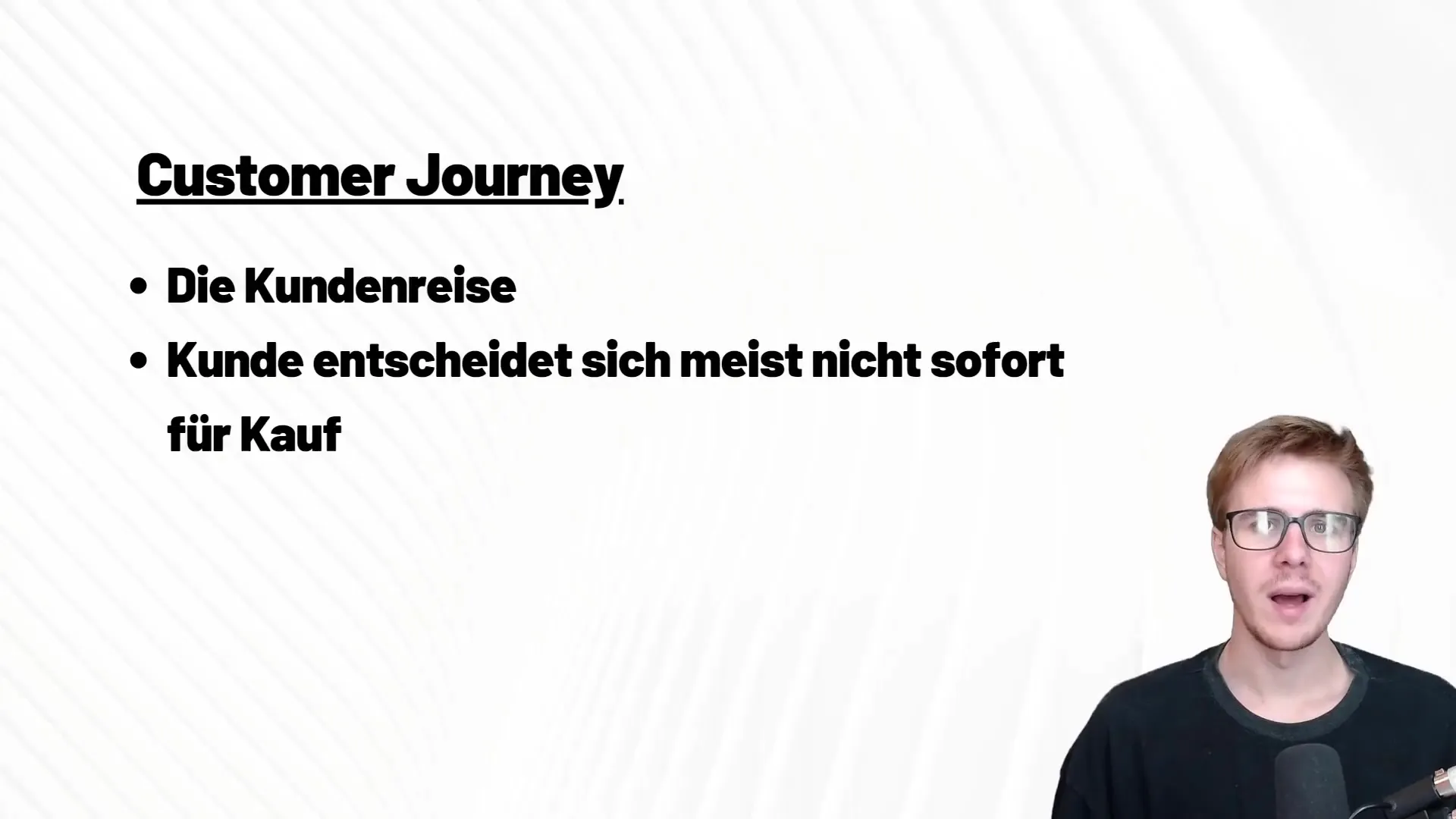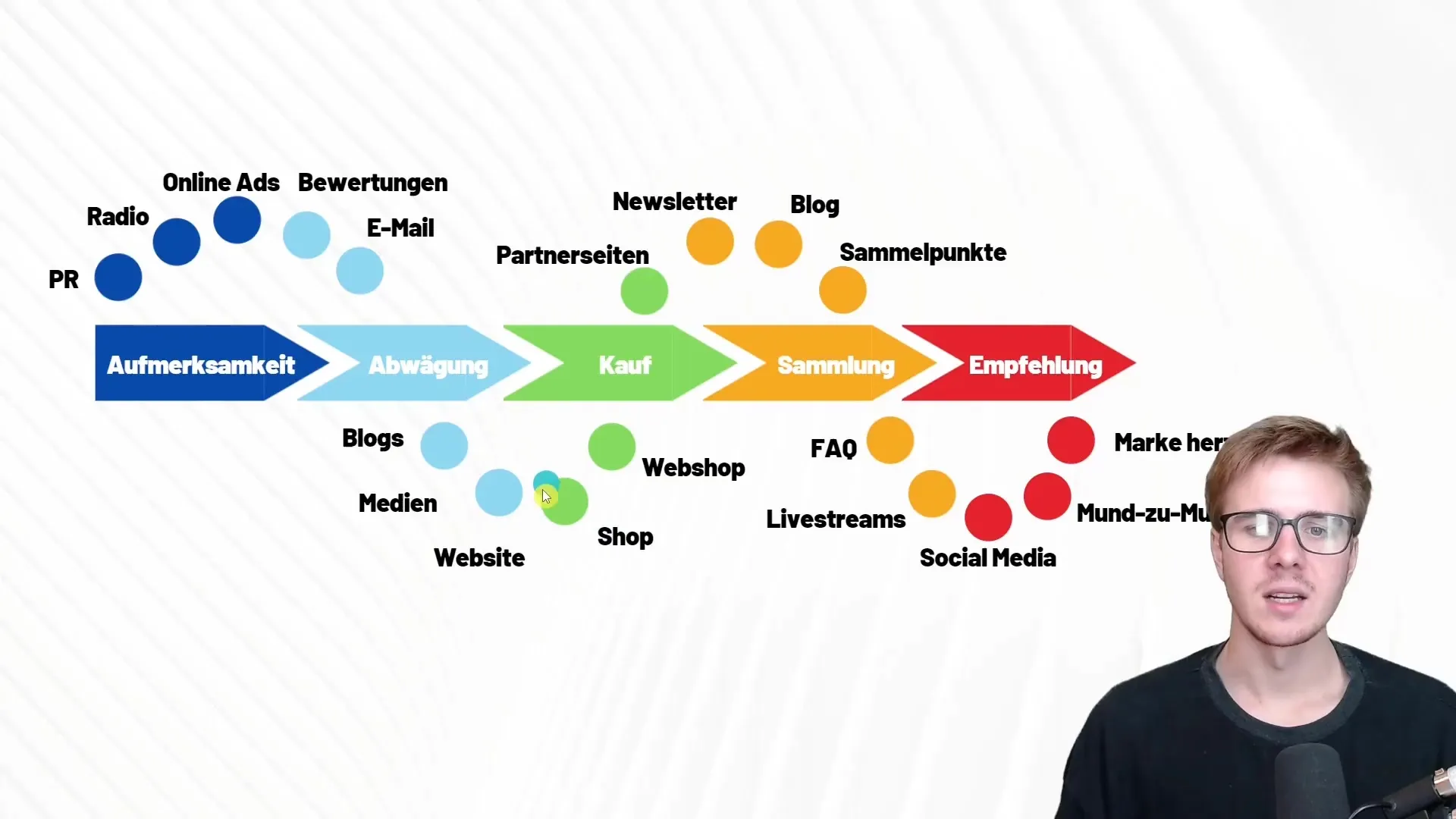The Customer Journey describes the journey of a customer from the first contact with a product to the purchase and beyond. In this guide, I will introduce you to the phases of the Customer Journey and explain how you can effectively use them in your marketing process.
Key Insights
- The Customer Journey consists of several phases: Awareness, Consideration, Purchase, Post-Purchase, and Advocacy.
- On average, a customer needs between 7 and 11 contacts with your product before making a purchase decision.
- It is important to maintain customer loyalty post-purchase to encourage repeat purchases and referrals.
Step-by-Step Guide to the Customer Journey
Phase 1: Gaining Attention
The first step in the Customer Journey is gaining attention. This involves how you attract potential customers to your product. This can be done through various channels, such as Public Relations, Radio Advertising, or digital advertising on platforms like Facebook and Google.

Phase 2: Considering Options
Once the customer has directed their attention to your product, they begin to consider their options. They look at reviews, compare prices, and seek information on similar products. It is important that your product is positively perceived in this phase. You can achieve this by providing information through blogs or newsletters and also obtaining statements about your product from influencers or other opinion leaders.

Phase 3: Purchase Decision Process
The third phase is the purchase decision. Here, the customer decides whether to acquire your product. This can happen both online, through your own webshop, and offline in a local store. It is important that the purchasing process is simple and user-friendly. Also, consider whether you want to use partner sites or affiliate marketing to increase reach and maximize your revenue.

Phase 4: Post-Purchase – Building Customer Loyalty
After the purchase, it is crucial to continue to assist and connect with the customer. Many companies make the mistake of discontinuing contact after a purchase. Instead, you should take measures to build customer loyalty, such as providing a newsletter or the opportunity to collect loyalty points. This way, you stay in the minds of your customers and increase the likelihood of future purchases.
Phase 5: Recommendations and Brand Ambassadors
The final phase of the Customer Journey is advocacy. A satisfied customer is likely to recommend your product to friends and family, becoming a brand ambassador for you. Actively encourage your customers to share their experiences, whether through social media or word-of-mouth. Purchasing from a well-known brand often becomes a status symbol, and satisfied customers are happy to show this by wearing products in public or sharing about them.
Summary
The Customer Journey encompasses the steps a customer goes through before, during, and after purchasing a product. To make this journey successful, it is crucial to create optimal conditions in each phase. From the initial contact through careful consideration of options to successful purchase and subsequent customer loyalty and advocacy: Each phase plays an essential role.
Frequently Asked Questions
What is the Customer Journey?The Customer Journey describes the process a customer goes through from the initial perception of a product to promoting referrals.
How many contacts does a customer usually need before making a purchase?On average, a customer needs between 7 and 11 contacts with a product or brand before making a purchase decision.
Why is the post-purchase phase important?It serves to build customer loyalty, promote repeat purchases, and generate referrals to other potential customers.
Which channels are suitable for gaining attention?Public Relationships, Radio Advertising, Google, and Facebook Ads are some of the most common channels.
How can I encourage customer referrals?By offering them incentives to share their positive experiences through social media or word-of-mouth.


